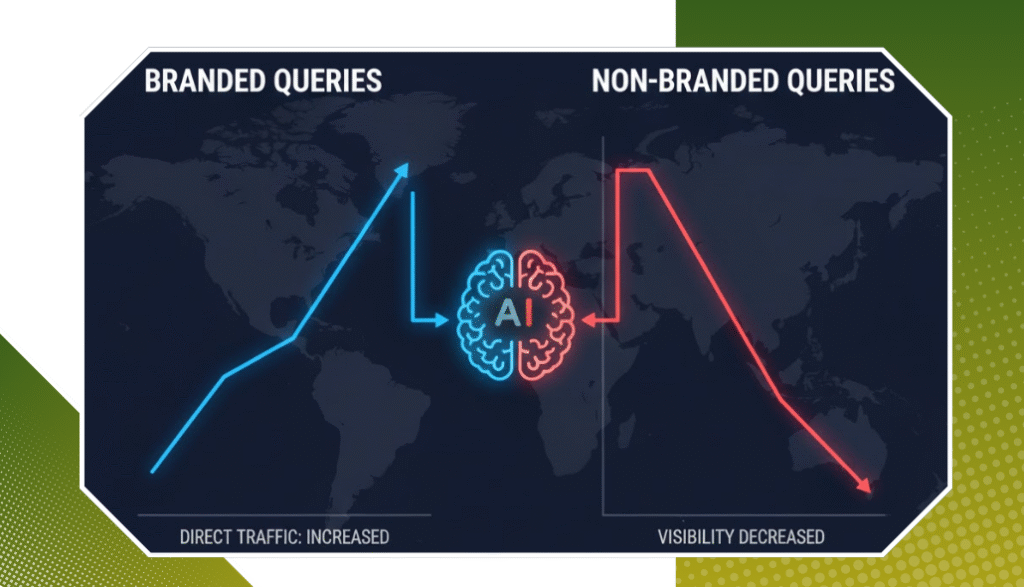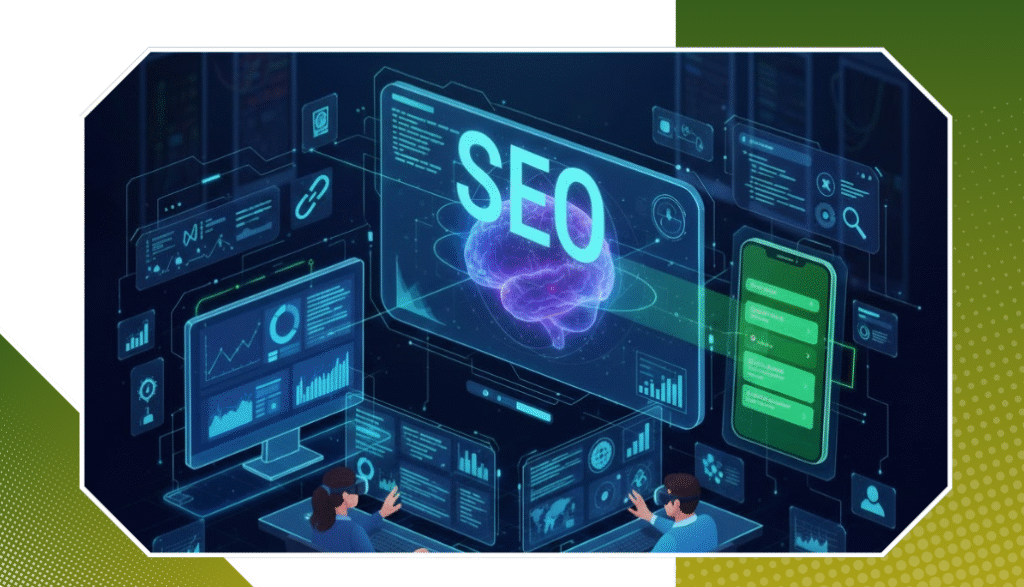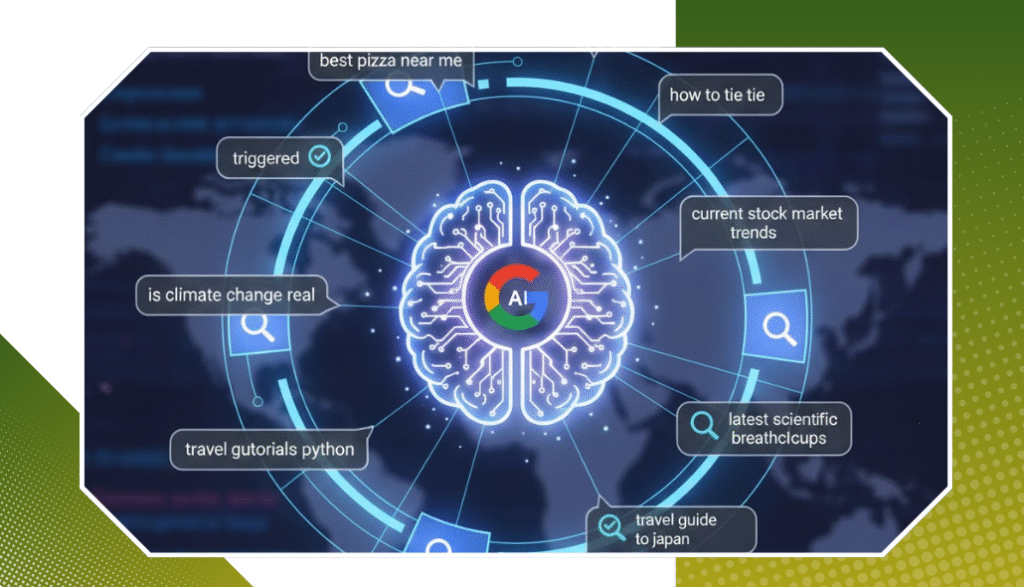We will share the top 10 internal linking tips for better AI Overview visibility, helping you optimise your site architecture for AI-enhanced search results. If you’re a seasoned SEO professional or just starting out, these actionable insights will help future-proof your content for the evolving search landscape.
1. Structure Content into Topic Clusters
One of the most effective ways to support AI Overview inclusion is by grouping related content into topic clusters. This model connects supporting articles (cluster content) to a central authoritative page (pillar content), signalling depth and expertise on a subject.
Google’s AI systems evaluate how well your content is connected semantically. A tightly interlinked cluster tells the system, “This site covers the topic thoroughly,” making it more likely to be considered for AI overview optimisation. For instance, a health site with interlinked articles on gut health, probiotics, and digestion can establish authority and relevance far more effectively than isolated posts.
2. Use Descriptive, Natural Anchor Text
Let’s face the reality: Gone are the days of generic anchor text like “read more” or “click here.” In today’s AI-powered environment, descriptive anchor text helps models like Gemini understand the context of the linked page.
For example, instead of linking with “learn more,” use “learn how probiotics improve gut health.” This not only improves user experience but also contributes to AI Overview SEO, making your content more understandable to machines. According to Google’s own Search Central documentation, clear and relevant anchor text is a ranking factor that supports content discoverability and contextual understanding.
3. Prioritise Contextual Relevance Over Volume
More links don’t always mean better SEO. In fact, over-linking to unrelated or barely relevant pages can dilute your internal structure and confuse AI systems. To improve your AI overview optimisation, prioritise linking to content that adds value within the current context. If a blog on “How to Reduce Inflammation Naturally” links to a page on “Anti-inflammatory Diet Plans,” it creates a meaningful relationship that AI can easily interpret.
Always ask yourself: Does this link help the reader learn more about the exact topic they’re exploring?
4. Support Cornerstone Content with Deep Links
Cornerstone content (long-form, authoritative pages) often forms the foundation of your topic clusters. But these pages don’t gain power in isolation; they need internal support. Deep-link to your cornerstone articles from relevant blog posts, guides, and FAQs. The more strategically placed internal links point to your cornerstone content, the stronger its visibility signal to AI becomes. This tactic enhances AI Overview SEO by showcasing your site’s authority and structured knowledge on a core subject area.
5. Link High-Traffic Pages to Underrated Resources
Got blog posts or landing pages that consistently bring in traffic? Use them as internal link hubs. By adding strategic links to lesser-known but valuable content, you distribute link equity across your site. This technique not only improves crawlability but also strengthens topical relevance, a key factor in how to optimise for AI Overview.
For example, if your high-ranking blog on “Common Running Injuries” links to a lesser-seen guide on “How to Strengthen Your Ankles,” the connection increases the lesser page’s chance of being noticed by AI systems.
6. Optimise Link Placement Based on Scroll Depth
Not all links are treated equally; placement matters. Internal links placed higher in the content or within the first few paragraphs are crawled and weighted more heavily than those buried at the bottom. From a user perspective, early placement improves discoverability. From an AI standpoint, it signals priority. For better AI Overview visibility, aim to integrate high-value internal links early in the page body, especially when summarising or setting context.
7. Eliminate Orphaned Content Pages
Orphaned pages, those without any internal links pointing to them, are almost invisible to search engines and AI systems. If a page isn’t linked from anywhere, Google may assume it holds little value.
Conduct regular audits to find and reconnect orphaned content. Linking them from relevant, well-trafficked pages helps Google understand how they fit into your overall site structure. This boosts your chances of inclusion in AI Overview snippets.
#Pro tip: Tools like Screaming Frog or Ahrefs’ Site Audit can identify orphaned pages quickly.
8. Use Schema Markup to Reinforce Context
Schema markup (like FAQ, HowTo, and Article types) adds a machine-readable layer to your content. When paired with smart internal linking, it helps AI systems better understand the relationships between pages.
For example, an FAQ page about “AI in SEO” that links to a blog on “How AI Affects Search Ranking” and uses FAQ schema becomes more eligible for AI Overviews.
While schema alone won’t get you featured, it supports the overall goal of AI overview optimisation by clarifying how content fits together across your site.
9. Refresh and Relink Older Content Regularly
Content updates are standard practice, but many forget to update internal links as well. As your site grows, new articles emerge that may better match old content thematically. Revisiting older posts to add links to newer, stronger content improves navigability and signals freshness. It’s a great factor that can indirectly influence your chances for AI Overview SEO exposure.
It’s also a great time to replace outdated or broken links, which can harm both user experience and crawlability.
10 Track Internal Link Performance and Adjust
What’s working? What’s not? Use tools like Google Search Console to track how internal links affect page performance. Look for changes in impressions and positions for content that has been restructured or newly linked.
This feedback loop will help you make wise decisions as you continue to optimise internal linking. Keep a close eye on how adjustments impact rankings and AI overview presence.
If you’re wondering, How do you optimise for AI overview?, it begins with treating your internal links like a content strategy, not just a navigation tool.
Conclusion
As Google’s AI-driven search evolves, internal links are no longer just for navigation—they’re crucial ranking signals. Implementing smart internal linking tips for better AI Overview visibility helps establish topical authority, improves crawlability, and boosts your chances of being featured in AI-powered summaries. Every strategic link strengthens your site’s structure and signals relevance to Google’s generative models.
At Rankingeek Marketing Agency, we help brands adapt to this new SEO era. From intelligent internal linking strategies to full-scale SEO, content creation, and website optimization, we ensure your site is built for both users and AI. Want to future-proof your visibility in AI Overviews and beyond? Get a free quote or book your appointment today to level up your SEO strategy.





